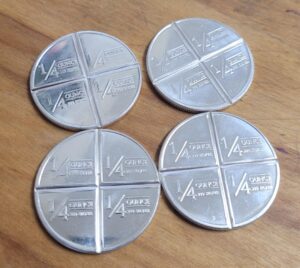Well, its been hovering around -15 the last couple days and, despite my best efforts: frozen pipe.
The hot water pipe to my kitchen sink appears to have frozen. Now, this is an old house (ca.1915~) so getting into the walls isnt really a thing unless you wanna have big repair job afterwards. So, what to do?
Well, first thing I did was head to the basement and put the kerosene heater in the area that I believed was right below the frozen area. No joy. Let it run all day and still no water.
Alright, next step was to take a small electric space heater, put it in the space under the sink and close the cabinet doors. Let that run all night. No joy.
At this point I’m rather irritated and somewhat worried. How do you heat a section of wall without setting fire to the house or having to rearrange everything?
As it turns out, there is a small hole in the wall in the cabinet below the sink. The drainpipe for the sink has a small opening next to it from a plumbing nightmare a few years ago. Could I somehow pipe hot air into that opening and heat the wall from the inside?
I channeled my inner MacGyver……”Talk to me, Goose Mac..”
One hair dryer + one roll of packing tape + one empty cardboard tube from Christmas wrapping paper = intrawall heat injector:
 Took one minute to put it together, and five minutes for it to work and get the water flowing again. (And 24 hours to come up with the idea after exhausting other ideas.) Remember, kids: if its stupid and it works, it ain’t stupid.
Took one minute to put it together, and five minutes for it to work and get the water flowing again. (And 24 hours to come up with the idea after exhausting other ideas.) Remember, kids: if its stupid and it works, it ain’t stupid.
He was a simp for his gun aversion, but other than that MacGyver had some tolerable survivalist cred.

















